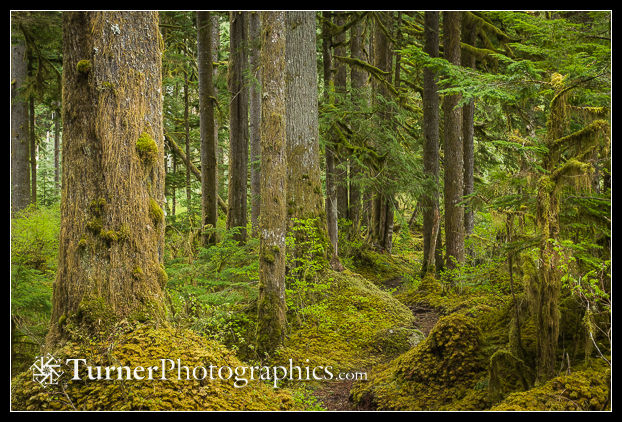
April hikes in the North Cascades have to be at lower elevations unless you want to break out your snowshoes or skis. On a rainy Sunday it made sense for my friend Brian and me to choose the East Bank Baker Lake Trail and head to Noisy Creek. Neither of us had hiked this section of trail before.
At only 800 feet elevation, spring was in full swing along the trail. We inhaled deeply as we entered the woods, sucking in the sweet scent of moist humus and conifers. Much of the forest is old growth, the usual mix of Douglas-fir, western hemlock, and western redcedar, the understory a tangle of mossy logs and thickets of vine maples, salmonberries, and huckleberries. Without a trail it would be tough bushwhacking. Continue reading →
![Skunk Cabbage [Lysichiton americanus]. Turner Photographics Woodland, Bellingham, WA. © Mark Turner [2000597] Skunk Cabbage](/wp-content/uploads/2020/04/Turner_2000597-Edit.jpg)


![Garden weeds Hairy Bittercress, Henbit, Creeping Buttercup, Common Groundsel [Cardamine hirsuta; Lamium purpureum; Ranunculus repens; Senecio vulgaris]. Turner Photographics Garden, Bellingham, WA. © Mark Turner [2000508] Garden weeds](/wp-content/uploads/2020/03/Turner_2000508.jpg)
![Henbit blossoms & foliage [Lamium purpureum]. Turner Photographics Garden, Bellingham, WA. © Mark Turner [2000490] Henbit blossoms](/wp-content/uploads/2020/03/Turner_2000490.jpg)
![Indian Plum (Osoberry) blossoms among foliage [Oemleria cerasiformis]. Turner Photographics Woodland, Bellingham, WA. © Mark Turner [2000443] Osoberry blossoms](/wp-content/uploads/2020/03/Turner_2000443.jpg)
![Vine Maple leaf buds detail [Acer circinatum]. Turner Photographics Woodland, Bellingham, WA. © Mark Turner [2000463] Vine Maple leaf buds detail](/wp-content/uploads/2020/03/Turner_2000463.jpg)
![Pacific Bleeding Heart emerging flower buds below foliage, among moss [Dicentra formosa]. Turner Photographics Woodland, Bellingham, WA. © Mark Turner [2000395] Pacific Bleeding Heart emerging flower buds](/wp-content/uploads/2020/03/Turner_2000395.jpg)
![Giant Purple Wakerobin [Trillium kurabayashii]. Turner Photographics Woodland, Bellingham, WA. © Mark Turner [2000380] Giant Purple Wakerobin](/wp-content/uploads/2020/03/Turner_2000380.jpg)


![1500359 Red-flowering Currant against wooden fence [Ribes sanguineum]. Lemon & Prevost, Bellingham, WA. © Mark Turner Red-flowering Currant against wooden fence](/wp-content/uploads/2015/03/Turner_1500359.jpg)